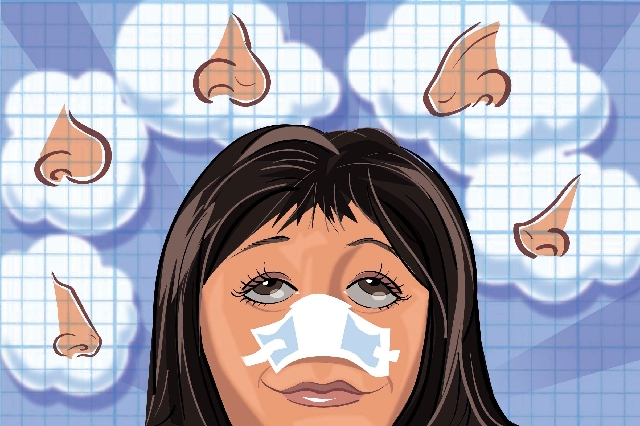Fix the nose, but keep me ethnic
There’s a new buzzword floating around plastic surgeons’ offices. The practice itself isn’t new, but the term is new to patients. And the ones who’ve done their research are using it more and more during consultation appointments.
They want what’s called ethnic rhinoplasty. Translation: They want a nose job, but they don’t want to lose their ethnicity in the process.
“There was a time in plastic surgery when some plastic surgeons would get real comfortable with a certain aesthetic result and that would be their signature,” says George Alexander, local plastic surgeon. “But rhinoplasty is very unique. Everyone’s nose is like their fingerprint.”
About 30 years ago, the look for rhinoplasty was very European-inspired, regardless of the patient’s ethnic background. Whether that was a result of Caucasian doctors sticking to one end result or patients actually requesting it is hard to tell.
Alexander has been practicing since 1994 and says his practice promotes a customized look, so his patients — approximately 20 percent of which are ethnic minorities — have consistently been comfortable with an improved version of what they already have.
Across state lines, however, in a town with the kind of vanity that can give Las Vegas a run for its money, Los Angeles-based plastic surgeon John Vartanian remembers patients of color handing him photos of Paris Hilton and Hilary Duff just 10 years ago.
Since then, the photos have changed to Lucy Liu, Halle Berry and Penelope Cruz.
Vartanian credits the prominence and popularization of everything from rap music to certain TV shows, even the Internet, which he says all contributed to “a great turning point, where the chains of ethnic compartmentalization broke down.”
“All these outlets mean more people don’t have to feel like they don’t belong in the mainstream,” he says.
There are two types of ethnic rhinoplasty: reduction and augmentation. Reduction is most common and usually addresses an exaggerated nasal hump or large nostrils. Augmentation, is mostly sought out from Asian groups and some Latinos, who have a flat nose and want the appearance of a bridge.
However, each ethnic group has a variation of noses, making ethnic rhinoplasty a surgery specific to each individual patient. Latinos, for instance, can have a droop Castilian nose, prominent Aztec nose or an Afrocentric flatter nose.
It translates to more communication before surgery, sometimes pulling family members into the picture to make sure the desired outcome satisfies, not just the patient but those who still have the nose they’re hoping to change.
Vartanian’s Jewish and Italian patients have also made clear in recent years that they don’t want a petite nose that will completely alter their look and rob them of their nationality.
“Ten years ago I would plead with them not to go too small,” he says. “Now they’re saying, ‘I want my nose done, but I don’t want it too small, how my mom did it.’ ”
The cosmetic concerns over heritage extend to injectables, too. Dr. Babak Ghadishah of Internal Medicine Specialists hears it before he injects ethnic patients with Botox and Juvederm. In the past two to three years, he says, he’s been hearing it more frequently.
“Nowadays people don’t want to look like a Barbie doll,” he says. “They want to look pretty the way they look.”
Injectables primarily affect eyes, cheekbones and lips. Ghadishah recently had a client clarify that she in no way wanted to enlarge her eyes. He was to keep her looking Native American.
Fillers aren’t permanent, like plastic surgery, but they last nine months to a year. Some ethnic patients see that as the potential to have a year of their life looking and feeling like a lie. Others, Ghadishah says, actually come in requesting to “look white.”
“They say it, sometimes in a joking manner, because they know it’s not going to happen,” he says. “But they want to do whatever they can to look like the picture.”
That’s not the case at Alexander’s office, where he says ethnic patients wanting to look white are “definitely in the minority.” But he has yet to have a Caucasian patient come in requesting an ethnic look.
Of course, that’s where rhinoplasty is concerned. Lip fillers, butt augmentation and airbrush tans would suggest otherwise.
Rhinoplasty being as complicated as it is, many times it requires further enhancement after surgery, Alexander says.
“Beauty is very complex. There’s not just one result for everyone,” he says. “Usually it starts within, for starters. But there’s never a cookie-cutter approach to it.”
Contact Xazmin Garza at xgarza@reviewjournal.com or 702-383-0477. Follow her on Twitter @startswithanx.

















